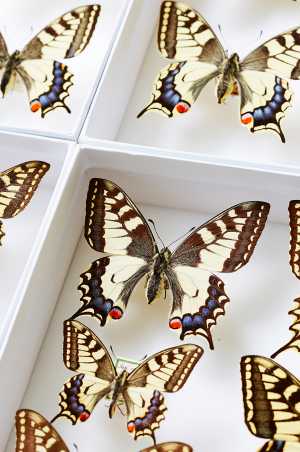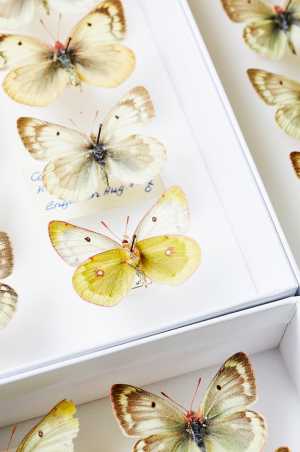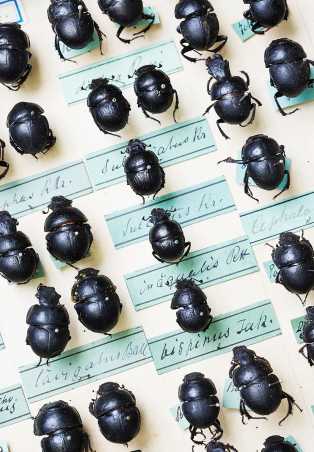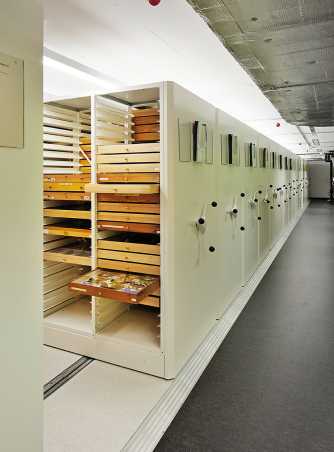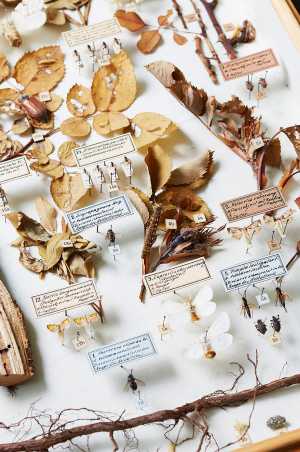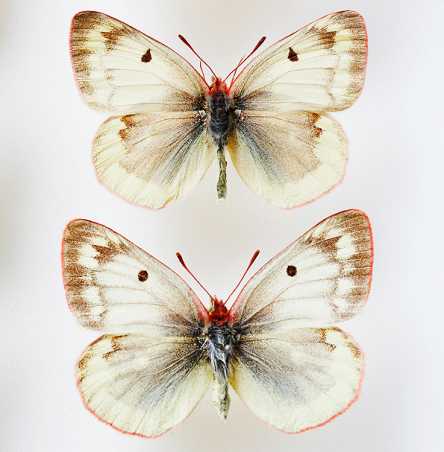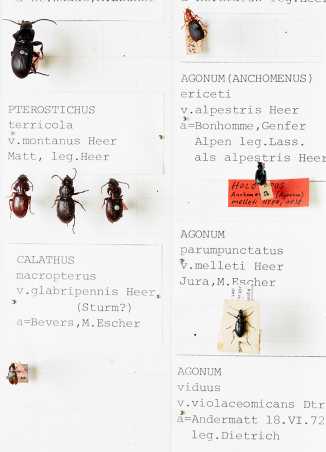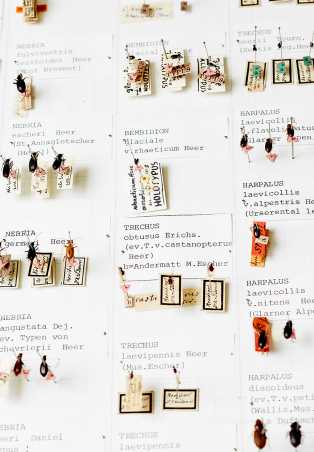Entomological Collection
Overview
The ETH Zürich Entomological Collection is one of the largest and most important insect collections in Central Europe, hosting more than 2,000,000 specimens, including ~5200 type specimens, which are being continually added to the NAHIMA database. In 2014, the collection and its associated reference library moved to a new state-of-the-art facility near the ETH Zentrum campus. The Collection regularly hosts visiting researchers and also provides loan specimens and other data to scientists and institutions worldwide. It is also actively involved in a range of education and public-outreach activities.
History and highlights of the collection
The Entomological Collection was first established when donation of the private collection of Heinrich Escher-Zollikofer (comprising 60,000 insect specimens from 22,000 species) was accepted by the Swiss Federal Council in 1858. Since that time the collection has grown steadily both through the collecting efforts of ETH researchers and students and bequests of private collections. Its current holdings include historic and modern collections of Swiss and Central European insect species, as well as significant collections of Lepidoptera, Hymenoptera, and Coleoptera from other parts of the world, for example the Hymenoptera collection by Anton von Schulthess-Rechberg (Download Schulthess catalogue (PDF, 1.8 MB)). The collection also houses an associated reference library (Download Library catalogue (PDF, 1.2 MB)), which includes a number of rare and historically significant texts, as well as a slide collection, including more than 20,000 images by the well-known nature photographer Albert Krebs and others depicting insects native to Switzerland. A detailed history of the collection (in German) by Dr. Willi Sauter can be found in external page Vierteljahrsschrift der Naturforschenden Gesellschaft in Zürich 138/3: 203-218.
Plans for the future
A current priority for The ETHZ Entomological Collection is to provide enhanced online access to its resources, through the digitisation of key sub-collections and modernisaton of the collection database, as well as the development of online educational resources. These improvements will greatly enhance the accessibility of the collection and ensure that it remains a valuable resource for both researchers and the general public for years to come.
Contact
Entomological Collection
Weinbergstrasse 56/58
8092 Zürich
Curator:
Professur f. Biokomm. u. Ökologie
Weinbergstr. 56/58
8092
Zürich
Switzerland
Opening hours
Visits by appointment. Individual guided tours on request. Please contact
